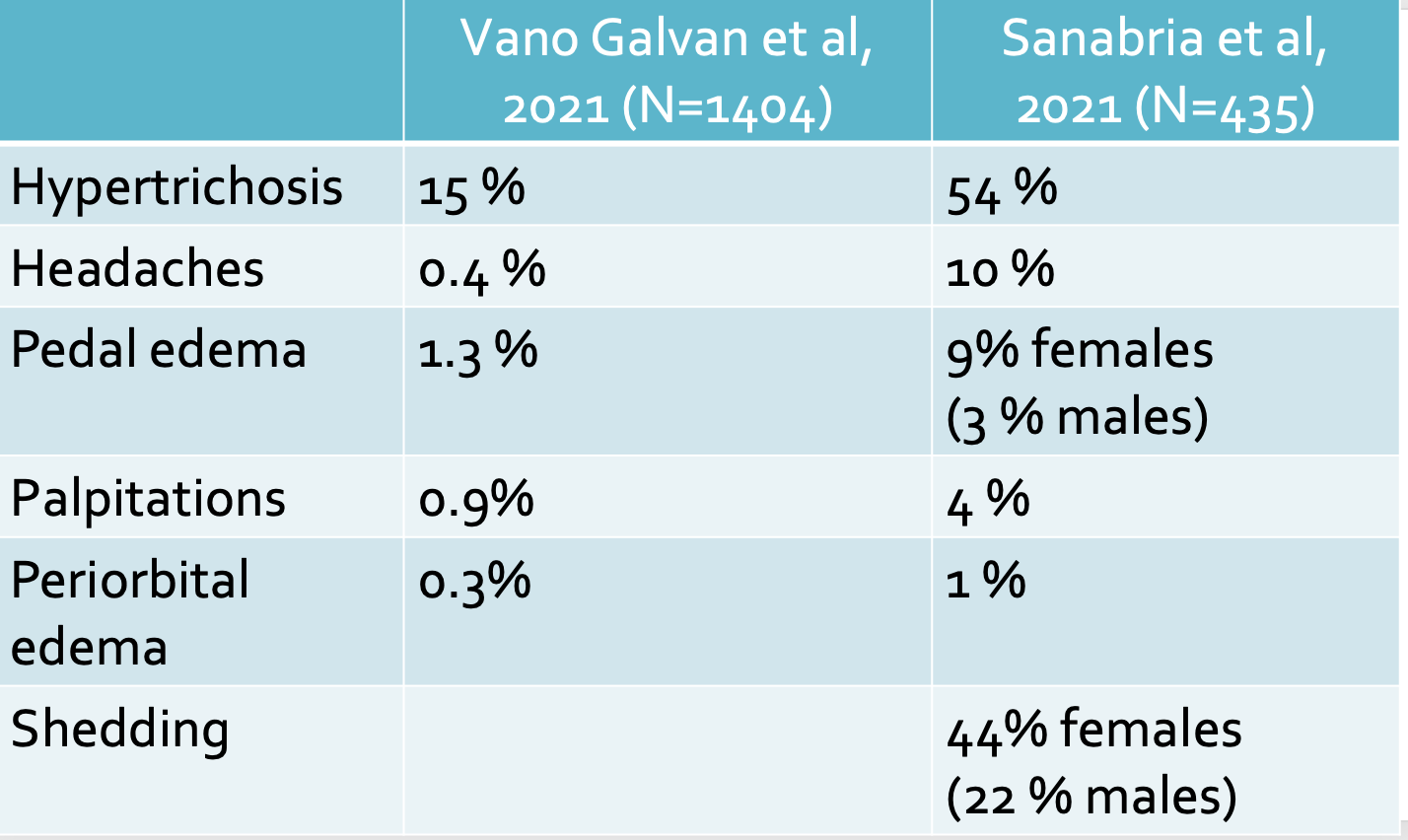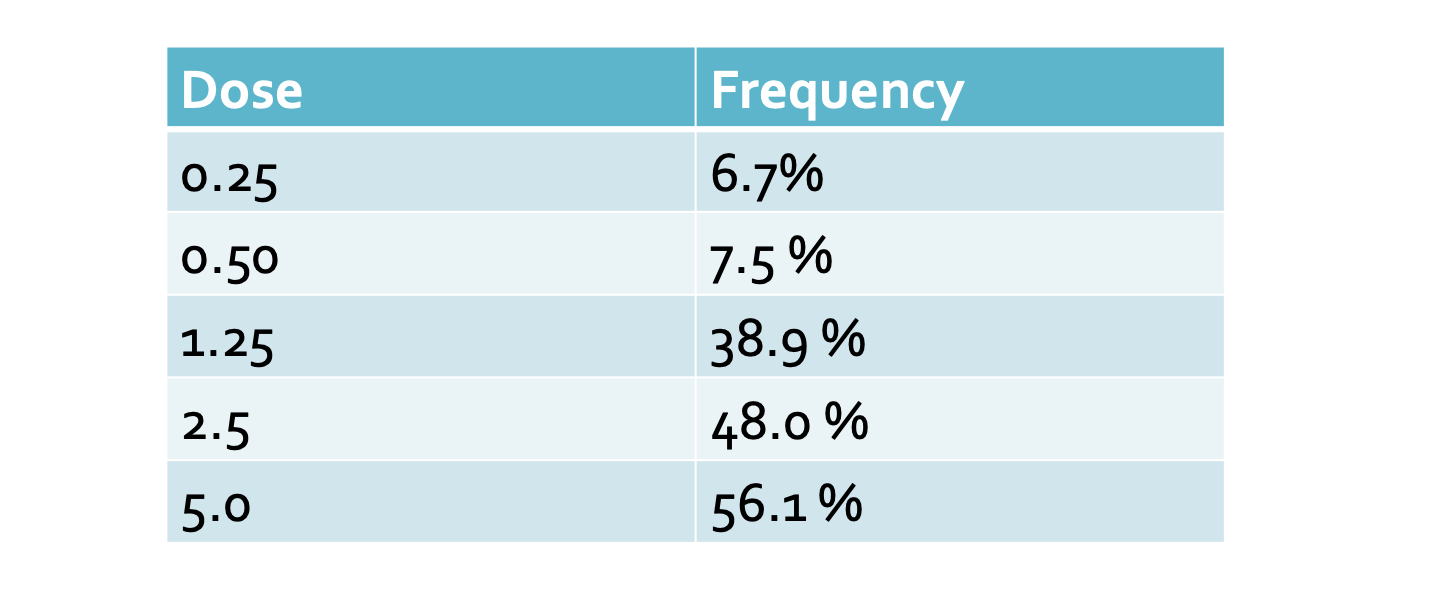Low Dose Oral Minoxidil: What are the main side effects ?
What are the side effects of “low dose” oral minoxidil?
A Look Back at “High Dose” Oral Minoxidil
Oral minoxidil has been around since the 1970s when it was used to treat blood pressure problems (i.e. hypertension). Even when it was used in the 1970s, oral minoxidil was not first line or starting treatment for blood pressure problems but rather an option for stubbornly refractory blood pressure issues. If a patient’s blood pressure was not coming down on standard therapies, oral minoxidil would be considered next. The typical dose used int eh 1970s was 20-40 mg. Some needed less but many needed up towards 100 mg in order to reduce their blood pressure.
Oral minoxidil at these high doses (40 mg +) was not very well tolerated. The drug raised heart rate and caused fluid accumulation. Often the heart rate increased to levels that patients need to use other drugs like beta blockers to get the heart rate back down into a normal range. As far as the side effect of fluid retention goes, patients using high dose oral minoxidil in the 1970ss experienced fluid retention in the feet, legs, body, around the eyes and even around the heart (pericardial effusions).
A New Era of “Low Dose” Oral Minoxidil: What Side effects are Possible?
Low dose oral minoxidil refers to use of the medication at doses of 0.25 to 5 mg to treat hair loss.
Low dose oral minoxidil has become increasingly popular over the last 10 years. The use of oral minoxidil has been studied in about 25 different studies, including studies relating to androgenetic alopecia, traction alopecia, chemotherapy induced alopecia, scarring alopecia, chronic telogen effluvium, monilethrix, alopecia areata,and loose anagen syndrome.
The best studied is androgenetic alopecia, where studies suggest 50-70 % benefit at least to some degree and about 8-50 % of users benefit a great deal.
Two Oral Minoxidil Safety Studies Worth Noting : Vano-Galvan et al and Sanabria et al
If you want to get a bit of insight into the safety of oral minoxidil, you’ll want to open the recent 2021 studies published in the Journal of the American Academy of Dermatology by Vano-Galvan et al and also the study by Sanabria et al. These are two different studies with different design.
Vano-Galvan et al, 2021
The study by Vano-Galvan et al is a multicenter study from 10 institutions. Data from 1404 patients went into analyzing the result The mean age was 43 and 76 % of patients in the study were women. Oral minoxidil was being used for many different hair loss conditions (and not just androgenetic alopecia). The mean dose of oral minoxidil was 1.6 mg. 20.6 % of patients had side effects and 1.7 % needed to stop the drug due to side effects.
The array of side effects is shown in the table below.
Sanabria et al, 2021
The study by Sanabria was a study of 435 patients, including 215 women and 220 men. It was very different from the study mentioned above because patients were contacted directly by phone and side effects were reviewed by phone. 54-56% of patients had some kind of side effect. The typical dose in women was 0.6 mg to 1 mg and the typical dose in men was 1.6 to 5 mg. 13 % of women stopped the drug and 4 % of men stopped.
The array of side effects is shown in the table below.
These two studies are important as they give us some understanding about side effects and what we should be telling patients who are considering starting the drug. The risks of hair growth on the body, headaches, swelling in the feet and around the eyes, palpitations and shedding must be discussed with patients.
Hypertrichosis with Oral Minoxidil
Hypertrichosis is the most common side effect of oral minoxidil and occurs in up to one half of patients. In a recent review by Jiminez-Cauhe et al published in Dermatologic Therapy, the risk of hypertrichosis with oral minoxidil was clearly related the dose that a patient used. I have summarized the key data below. This data comes from 14 studies in over 442 patients.
Pedal Edema With Oral Minoxidil
Swelling in the feel and ankles in minoxidil users represents fluid retention. it is referred to as ‘pedal edema.’ In the review by Jiminez - Cauhe, the risk of pedal edama was clearly related to dose with less than 1 % of users experiencing pedal edema at doses less than 0.25 mg but 7.6 % having edema at doses above 5 mg.
Summary and Conclusions
Low dose oral minoxidil can be helpful inn the treatment of many hair loss condition. It is important to understand the side effect of oral minoxidil in order to counsel patients about the risks and benefits. Side effects may occur in 20-50 % of patients. Some side effects, like heart rate disturbances or swelling in the feet require doses adjustment or stopping.
References
Jimenez-Cauhe J et al. Safety of low-dose oral minoxidil treatment for hair loss. A systematic review and pooled-analysis of individual patient data. .Dermatol Ther. 2020 Nov;33(6):e14106.
Sanabria B et al. Adverse effects of low dose oral minoxidil for androgenetic alopecia in 435 patients. JAAD 2021; 84: 1175-78
Vano-Galvan S et al. Safety of low dose oral minoxidil for hair loss: A multicenter study of 1404 patients. JAAD 2021; 84: 1644-51.
This article was written by Dr. Jeff Donovan, a Canadian and US board certified dermatologist specializing exclusively in hair loss.



